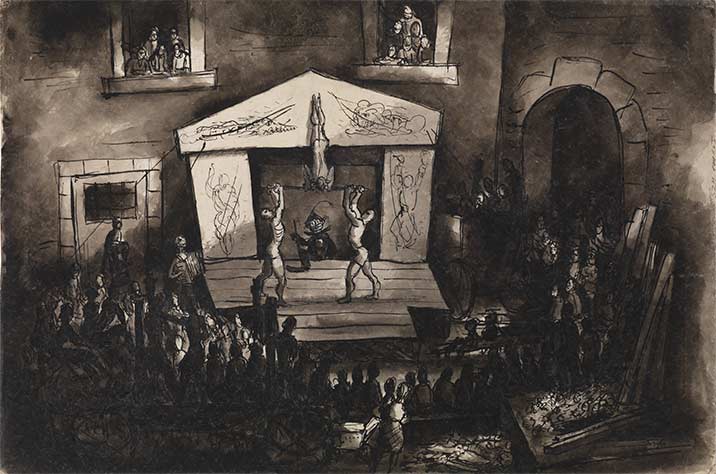
- Bedřich Fritta, Vaudeville Theater, 1943/44
Ink, pen and brush, wash, 55,7 x 83,5 cm
© permanent loan to the Jewish Museum Berlin from the Fritta-Haas family, photo: Jens Ziehe
Cultural life was possible in Theresienstadt, though in a restricted form. It included theater, concerts, and vaudeville performances, initially held in secret.
For the SS, these activities helped to promote the desired propaganda image.
But for the prisoners, cultural events in the ghetto were opportunities for both distraction and intellectual resistance.
Illuminations
Among the most striking characteristics of Fritta's Theresienstadt works are their stark contrasts of light and shadow.
In these ink drawings, finished with brush and water, bright and startlingly illuminated sections dramatize the darkness of sleeping quarters, store rooms, or workshops, and the ghetto's courtyards, streets, and surroundings.
Fritta's use of chiaroscuro rarely imitates natural lighting. He works with artificial lighting effects that were familiar from the movies.
The drawing "Before the Transport" shows a woman awaiting deportation to Auschwitz. The heavy shadow on her face contradicts the shadow cast by her own body. It obeys not physics but the artist's intention, indicating the approach of death.
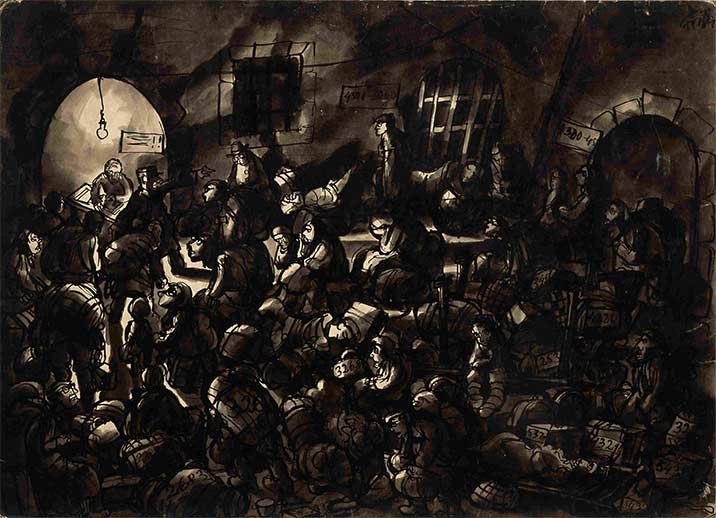
- Bedřich Fritta, People Waiting to Depart for Poland, 1943/44
Ink, pen and brush, wash, 70,3 x 97 cm
© permanent loan to the Jewish Museum Berlin from the Fritta-Haas family, photo: Jens Ziehe
This drawing shows people and their numbered luggage in the "Schleuse"-the "sluice" or "funnel." This was the assembly area where new arrivals or people leaving for Auschwitz were processed. The highly bureaucratic procedure often took several hours. Fritta's restless chiaroscuro emphasizes the "Schleuse's" role as a transition from life to death.
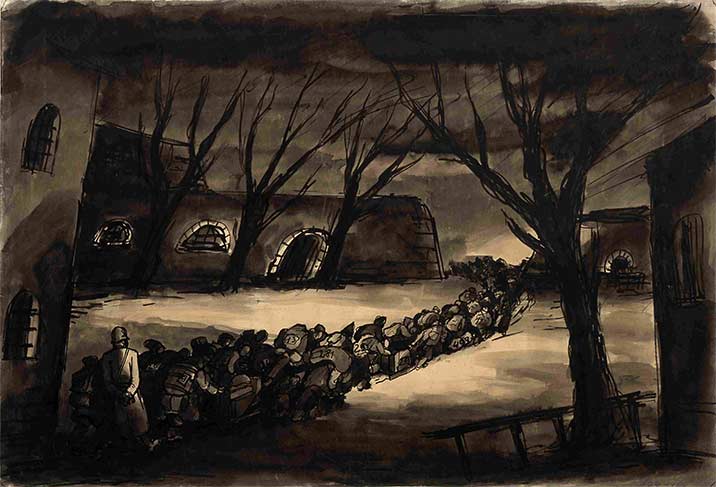
- Bedřich Fritta, A Transport Leaves the Ghetto, 1942/43
Ink, pen and brush, wash, 48,4 x 70,8 cm
© permanent loan to the Jewish Museum Berlin from the Fritta-Haas family, photo: Jens Ziehe
A throng of people leaves the ghetto for the station of Bauschowitz (Bohušovice), 2.5 km away.
From there, trains went to the death camps in the East. Starting in June 1943, rail tracks reached directly into the ghetto.

- Bedřich Fritta, Workshop for Repairing Military Uniforms, 1942/44
Ink, pen and brush, wash, 42 x 58,5 cm
© permanent loan to the Jewish Museum Berlin from the Fritta-Haas family, photo: Jens Ziehe
In Theresienstadt there was less forced labor for army and industry than in other ghettos and camps. This drawing of winter uniforms being waterproofed transforms the workshop into an eerie scene.
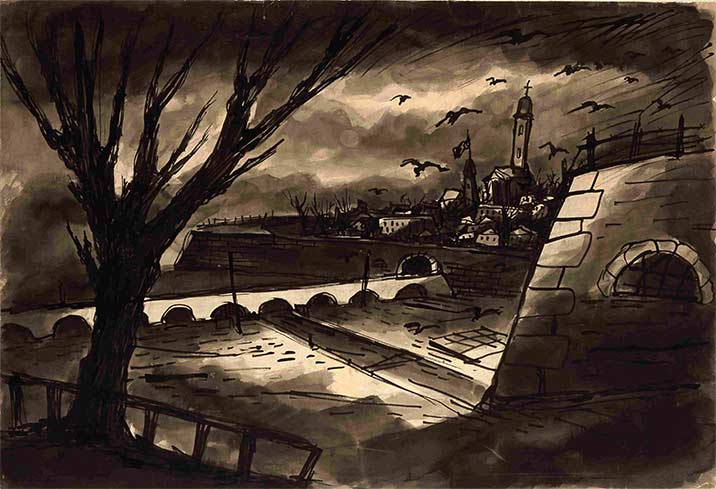
- Bedřich Fritta, View of Theresienstadt, the Hills of Bohemia in the Distance, 1942/44
Ink, pen and brush, wash, 48,3 x 70,5 cm
© permanent loan to the Jewish Museum Berlin from the Fritta-Haas family, photo: Jens Ziehe
Because he worked in the technical department, Fritta was occasionally allowed to go outside the fortress walls.
The sense of loneliness and the expansive view contrast with Fritta's images of the world inside the ghetto, especially the overcrowded mass sleeping quarters.
"Illuminations"
(list of drawings)
- Before the Transport, 1943/44
- Commencement of Work, 1942/44
- Furniture Store, 1942/44
- People Waiting to Depart for Poland, 1943/44
- Shared Living Quarters in a Former Shop, summer/autumn 1942
- Shared Living Quarters in an Attic, 1942/44
- A Transport Leaves the Ghetto, 1942/43
- Vaudeville Theater, 1943/44
- View of Theresienstadt, the Hills of Bohemia in the Distance, 1942/44
- Workshop for Repairing Military Uniforms, 1942/44



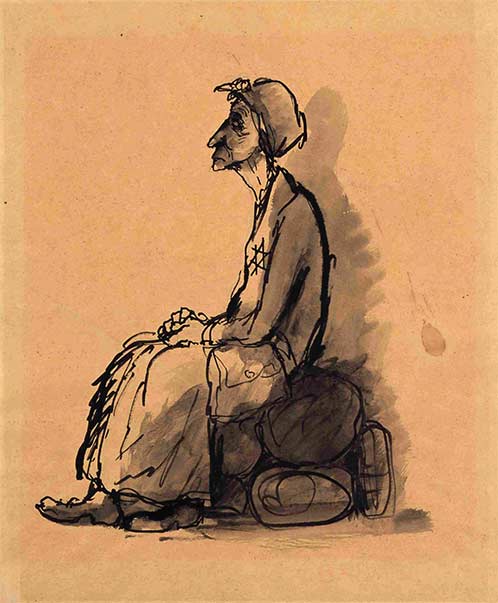

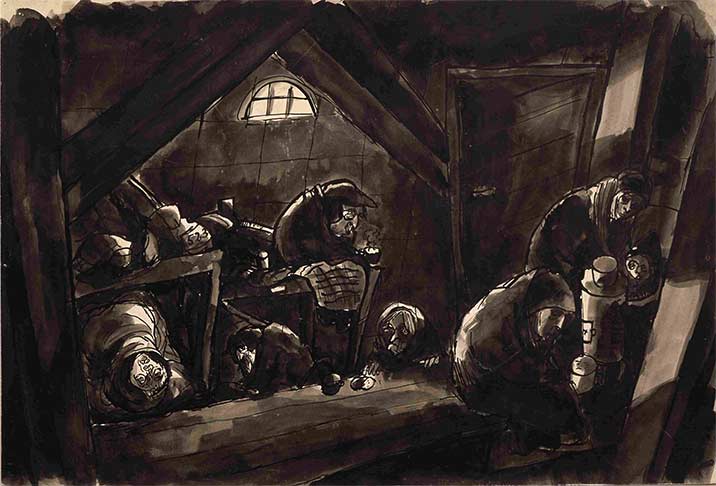

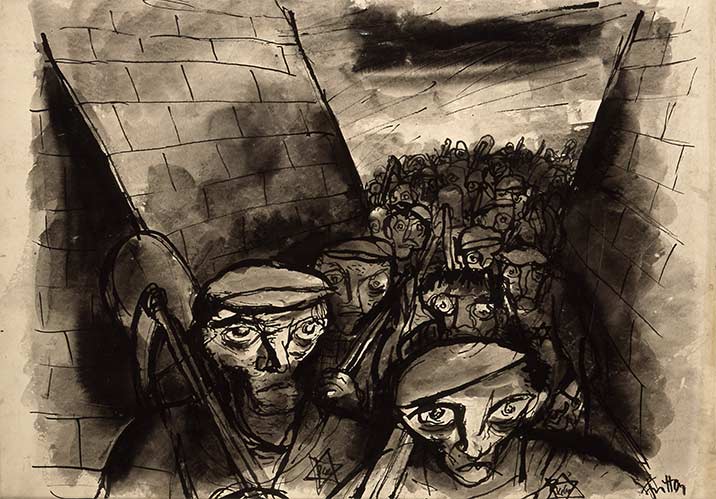
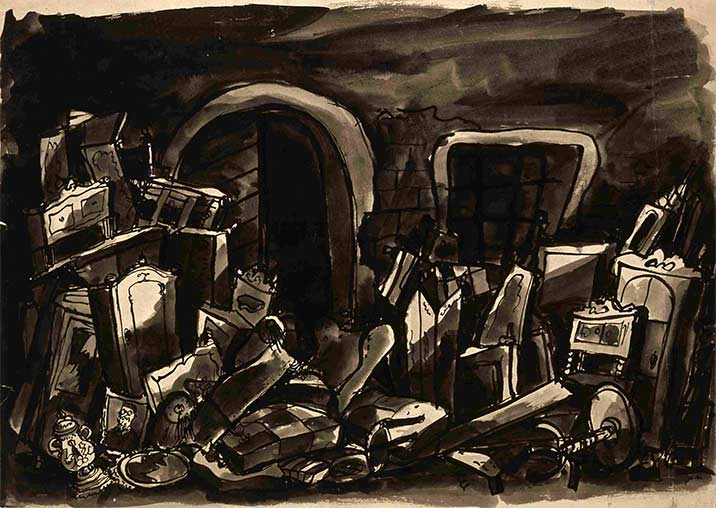
 Facebook
Facebook YouTube
YouTube